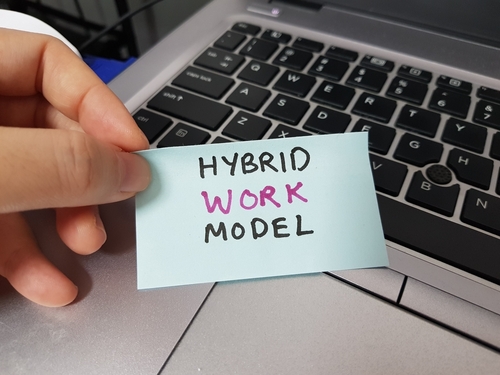The average workplace today doesn’t look like it used to. Thanks to evolving technology, remote work is accessible more than ever before, and more businesses are taking advantage of it. Although remote work has been on the rise for the past decade, the COVID-19 pandemic only normalized the decision. Now, even in a post-pandemic society, many businesses and individuals alike have chosen to fully adopt remote and/or hybrid workspaces.
Hybrid spaces in particular can be very beneficial for everyone. They allow for increased flexibility and less time commuting and tend to improve productivity. They also reduce company overhead and can expand talent pools when you’re recruiting.
However, some challenges can come with this type of work model. From an HR standpoint, hybrid work settings create new responsibilities that didn’t exist before.
Let’s take a look at some of the responsibilities that fall on HR’s shoulders in a hybrid workspace and the solutions you can implement to manage your office and your team.
Hybrid Office Obstacles
An effective hybrid workspace can save your business time and money. You’ll enjoy a greater talent pool, reduced absenteeism, and employee engagement. However, some of the common obstacles you’ll face as an HR professional shouldn’t be ignored. If you want to maintain a positive workspace, it’s essential to understand and get ahead of those obstacles as quickly as possible. Some of those challenges include:
- Building a strong company culture
- Increasing connectivity
- Boosting motivation
- Stress management
- Work/life balance
It’s your job to help employees strike a healthy balance when they’re working part time from home and part time in the office. Sometimes, the biggest benefits of a hybrid model can also be some of the drawbacks. For example, a hybrid model is often accompanied by more flexibility, thus allowing employees to strike a healthier work/life balance.
But that only works if your employees can stay motivated at home and aren’t distracted by things like other family members, electronics, or just the overall comfort of being able to work in their pajamas. That’s not always easy for everyone, especially if they have other family members or roommates who also work from home. A lack of motivation often leads to a lack of productivity, which ends up setting everyone back and causing more stress.
How to Manage Your Team Effectively
There’s no one-size-fits-all plan that works for every hybrid work environment. As an HR rep, you must use the resources available to create an environment that meets the needs of your team and your business—no matter where you’re located.
Don’t be afraid to use technology to your advantage. Without it, hybrid environments wouldn’t be possible. HR can play a pivotal role in the implementation of workplace tech to develop a hybrid office. That includes suggesting and helping to implement a 5G network for your company. 5G can make hybrid work more effectively by ensuring everyone stays connected and is on the same page whether they’re in the office or not. Things like cloud-based software will help to do the same.
On a more personal level, use resources to connect with your team more regularly. Schedule video calls, send out e-mails, and let them know your door is always open if they have concerns. These simple actions promote a company culture of inclusivity and accessibility. Not only will these things make it easier to manage your team, but they will also create a more stress-free environment.
Alleviating the Stress of a Hybrid Setting
A hybrid work environment is a great choice if you want to improve the mental well-being of your employees. But that might not be the case for the department in charge of managing those employees, keeping track of everyone, and making sure the hybrid model is appropriate for every position while recruiting new people all at once.
By using some of the strategies listed above, you’ll have an easier time managing your team and keeping everyone healthy, happy, and on the same page. But don’t lose sight of fostering a positive workplace culture and environment in the process. Be proactive about reducing burnout in the workplace by hosting regular employee meetings, recognizing peers for outstanding work, and creating a safe space for employees to open up if they’re feeling overwhelmed or stressed.
Finally, make sure you’re not ignoring your own mental health. Managing employees in a hybrid work setting can make it feel like you’re keeping track of two separate groups of people, even if they’re all working for the same company. Implement self-care strategies into your daily routine, both on and off the clock. Self-care may not seem that big once you start slowly bringing it into your routine, but it can make a big difference in how you feel in the long term. Try things like:
- Meditation
- Mindfulness
- Taking frequent breaks
- Prioritizing sleep
- Taking care of your body
- Taking advantage of a wellness program at work
Making sure your employees feel safe, healthy, and productive in a hybrid setting can be a fantastic way to improve retention and appear more attractive to potential recruits. Make sure you understand your responsibilities and how you can effectively manage your team whether they’re in the office or working from home.
Katie Brenneman is a Guest Contributor at HR Daily Advisor.

